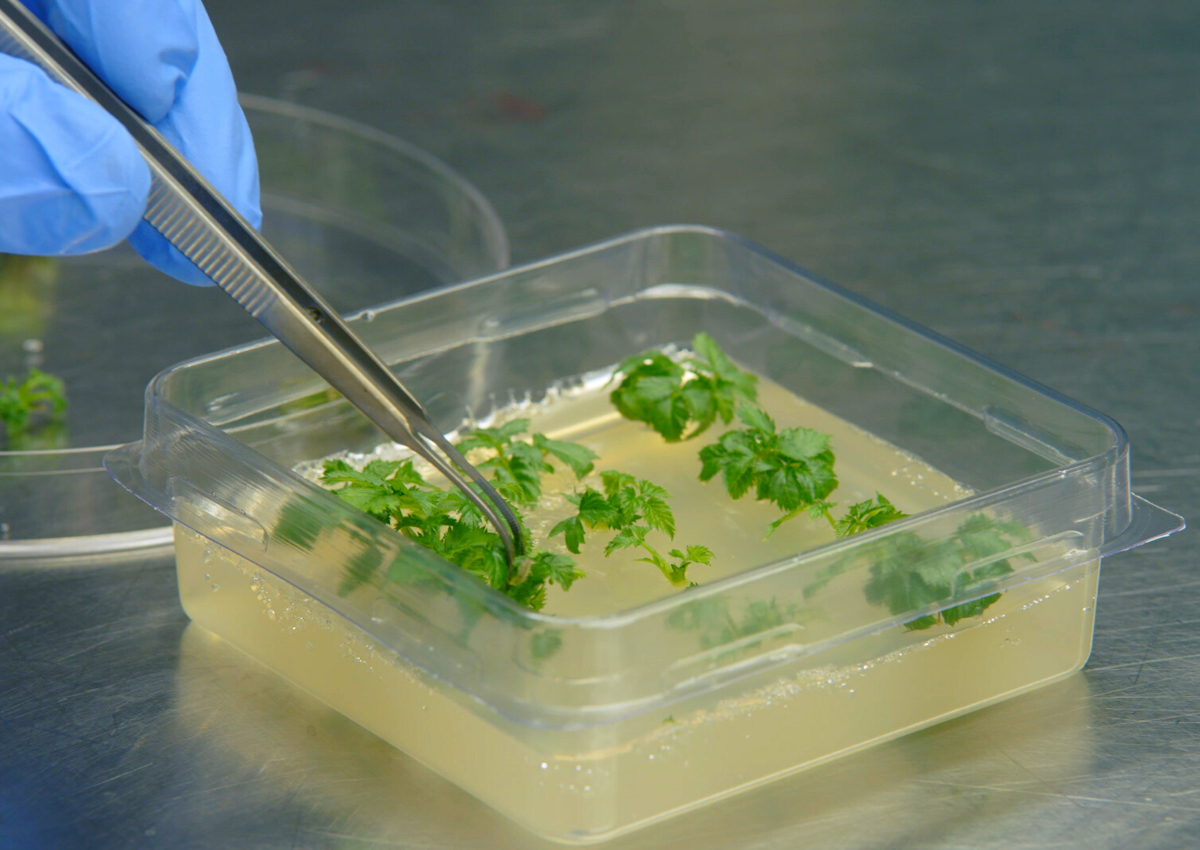Advanced CRISPR System For Precise Whole-Gene Integration

Table of Contents
Enhanced Targeting Specificity in Advanced CRISPR Systems
The original CRISPR-Cas9 system, while groundbreaking, suffered from off-target effects – unintended edits at locations other than the target site. These off-target mutations can be detrimental, particularly in therapeutic applications. However, newer iterations of the CRISPR gene editing technology significantly improve targeting specificity, making precise whole-gene integration a much more realistic goal.
Several advancements contribute to this enhanced precision:
- Base editing: This technique utilizes modified Cas enzymes to directly alter individual bases without causing double-stranded DNA breaks, minimizing the risk of off-target effects and offering a more precise approach to gene correction.
- Prime editing: A more advanced form of base editing, prime editing offers even greater flexibility, allowing for a wider range of edits, including insertions and deletions, with increased precision. This enhanced flexibility is crucial for the accurate integration of whole genes.
- Improved guide RNA design: Advanced algorithms and computational tools are now available to design guide RNAs (gRNAs) that exhibit improved target specificity and minimize off-target binding. This meticulous design process is vital for successful targeted gene insertion.
- Novel Cas enzymes: Researchers have identified and engineered new Cas enzymes from various bacterial species that demonstrate higher specificity and reduced off-target activity compared to the original Cas9. These CRISPR-Cas systems are instrumental in improving the accuracy of genome engineering applications.
Efficient Delivery Mechanisms for Whole-Gene Integration
Efficient delivery of the CRISPR components (Cas enzyme and gRNA) and the donor DNA containing the whole gene to be integrated is paramount for successful whole-gene integration. The choice of delivery method significantly impacts the efficiency and efficacy of the process. Several methods are currently employed:
- Viral vectors: Adeno-associated viruses (AAVs) are popular vectors due to their relative safety and ability to target specific cell types. However, their packaging capacity limits the size of the gene that can be delivered.
- Non-viral delivery: Methods such as liposomes and electroporation offer alternatives to viral vectors. Liposomes encapsulate the genetic material, promoting cellular uptake, while electroporation uses electric pulses to create transient pores in the cell membrane, allowing DNA entry. Gene delivery systems are constantly being improved to enhance efficiency and reduce toxicity. However, non-viral methods often have lower transfection efficiency compared to viral delivery.
- The selection of the best delivery method depends on the target cells, the size of the gene to be integrated, and other factors. Optimizing transfection efficiency remains a critical area of research in gene therapy and genome engineering.
Optimizing Homologous Recombination for Precise Integration
Precise whole-gene integration heavily relies on homologous recombination (HR), a natural DNA repair pathway that uses a homologous DNA template to guide the repair process. This template, the donor DNA containing the gene to be integrated, facilitates precise insertion into the target locus. However, HR is often less efficient than non-homologous end joining (NHEJ), another DNA repair pathway that results in imprecise insertions. Several strategies are employed to enhance HR efficiency:
- Efficient donor template design: Designing donor templates with long homologous arms flanking the gene to be integrated significantly increases the probability of HR-mediated integration.
- HDR-promoting agents: Certain agents can be used to enhance the activity of HR pathways and suppress NHEJ, thereby improving the efficiency of whole-gene integration.
- Suppressing NHEJ: By inhibiting NHEJ pathways, researchers can direct more DNA repair events towards HR, leading to a greater frequency of precise integration.
Applications of Precise Whole-Gene Integration using Advanced CRISPR
The ability to precisely integrate whole genes has profound implications across numerous fields:
- Gene therapy: Correcting genetic defects in inherited disorders, such as cystic fibrosis or sickle cell anemia, by precisely replacing the faulty gene with a functional copy.
- Disease modeling: Creating highly accurate animal models of human diseases by introducing specific gene mutations, thereby facilitating research into disease mechanisms and potential therapies.
- Synthetic biology: Engineering novel metabolic pathways in microorganisms for various applications, such as biofuel production or the synthesis of valuable compounds. This enables a powerful approach towards genome engineering applications.
- Development of innovative gene-based therapeutics.
These applications showcase the transformative power of advanced CRISPR in revolutionizing fields of medicine and biotechnology.
Conclusion
Advanced CRISPR systems have revolutionized our ability to perform precise whole-gene integration, overcoming many limitations of earlier gene editing technologies. Improvements in targeting specificity, delivery mechanisms, and homologous recombination optimization have enabled highly accurate targeted gene insertion. The diverse applications of this technology, particularly in gene therapy and genome engineering, hold immense promise for treating genetic disorders, modeling complex diseases, and advancing synthetic biology. Ongoing research and development efforts are focused on further enhancing the precision, efficiency, and safety of these systems, ultimately leading to transformative breakthroughs in various fields. Learn more about the cutting-edge advancements in Advanced CRISPR systems for Precise Whole-Gene Integration and its potential to revolutionize genetic engineering. Explore the latest research and contribute to this exciting field.

Featured Posts
-
 Augsburg Bayern Muenih Macini Hangi Kanalda Izleyebilirim
May 30, 2025
Augsburg Bayern Muenih Macini Hangi Kanalda Izleyebilirim
May 30, 2025 -
 High Temperatures Claim 311 Lives In England Analysis Of Heatwave Impact
May 30, 2025
High Temperatures Claim 311 Lives In England Analysis Of Heatwave Impact
May 30, 2025 -
 Guillermo Del Toros Frankenstein Latest Tease Leaves Horror Fans Baffled
May 30, 2025
Guillermo Del Toros Frankenstein Latest Tease Leaves Horror Fans Baffled
May 30, 2025 -
 Rn Vs Lfi A L Assemblee Nationale La Strategie Des Frontieres Face A La Bordelisation
May 30, 2025
Rn Vs Lfi A L Assemblee Nationale La Strategie Des Frontieres Face A La Bordelisation
May 30, 2025 -
 L Affaire Hanouna Le Pen Le Prochain Proces En Appel Et Ses Enjeux En 2026
May 30, 2025
L Affaire Hanouna Le Pen Le Prochain Proces En Appel Et Ses Enjeux En 2026
May 30, 2025
Latest Posts
-
 Upset Alert Tallon Griekspoor Defeats Top Seeded Zverev At Indian Wells
May 31, 2025
Upset Alert Tallon Griekspoor Defeats Top Seeded Zverev At Indian Wells
May 31, 2025 -
 Alexander Zverevs Early Exit At Indian Wells A Griekspoor Victory
May 31, 2025
Alexander Zverevs Early Exit At Indian Wells A Griekspoor Victory
May 31, 2025 -
 Indian Wells 2024 Zverevs Unexpected Loss To Griekspoor
May 31, 2025
Indian Wells 2024 Zverevs Unexpected Loss To Griekspoor
May 31, 2025 -
 Zverevs Indian Wells Campaign Ends Early Griekspoor Upsets Top Seed
May 31, 2025
Zverevs Indian Wells Campaign Ends Early Griekspoor Upsets Top Seed
May 31, 2025 -
 Indian Wells Surprise Griekspoor Defeats Top Seeded Zverev
May 31, 2025
Indian Wells Surprise Griekspoor Defeats Top Seeded Zverev
May 31, 2025
